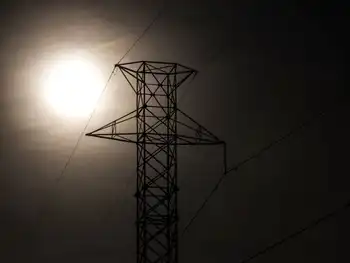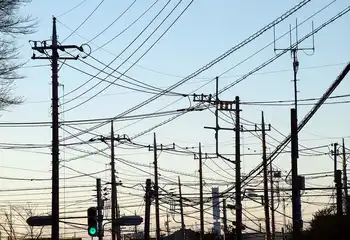CNE windmill declares first dividends
TORONTO, ONTARIO - That giant three-bladed propeller at the Canadian National Exhibition hasn't quite gone from White Elephant to Cash Cow with the disbursement of $32,000 in dividends to investors, but it's a welcome breath of fresh air for alternative energy proponents.
That giant three-bladed propeller at the Canadian National Exhibition hasn't quite gone from White Elephant to Cash Cow with the disbursement of $32,000 in dividends to investors, but it's a welcome breath of fresh air for alternative energy proponents. About 100 of Windshare's shareholders got the good news during their annual general meeting recently at Walmer Road Baptist Church.
It was a fitting location because when the project was first discussed in 1997, mainstream opinion was that a profitable wind turbine didn't have a prayer.
David MacLeod, president of Windshare, told the group, the project has displaced about 300 tonnes of carbon dioxide emissions.
It bills itself as North America's first urban wind turbine and is an "iconic," basically symbolic project, according to MacLeod who says it's also an attraction to many visiting delegations from other countries.
But it's paying. Among those getting cheques — $4 for each share owned — are the Daily Bread Food Bank and Foodshare, which will collect $4,000 each.
"An anonymous donor bought the shares and put them in those organizations' names with the idea that when the project was viable they would reap revenue from it," said MacLeod.
All told 427 investors collectively raised $800,000 to buy the initial 8,000 shares in the 750-kilowatt generator, which has now been running for just over two years.
While Windshare shareholders are getting a payment, the turbine at the CNE is 50 per cent owned by Toronto Hydro Energy Services, a Toronto Hydro subsidiary, in an arrangement where Hydro gets half the revenue from power sold to the grid but doesn't get dividends.
While Canada is far behind European adoption of wind power generation, it is making headway, said Robert Hornung of the Canadian Wind Energy Association (CanWEA).
Last fall's Bill 100, which restructured the Ontario energy market, also set targets for alternative energy to contribute to the grid, he said.
"In fact we're suggesting the province should double the target of 2,700 megawatts by 2010," said Hornung. "We think 5,400 megawatts is attainable — about 10 per cent of demand."
Four companies were chosen to develop five wind power projects in Ontario, generating a collective 354.6 megawatts of green power:
Erie Shores Wind Farm, Erie Shores Wind Farm LP (Port Burwell), 99 megawatts.
Prince Wind Farm, Superior Wind Energy Inc. (Prince Township, near Sault Ste. Marie), 99 megawatts.
Melancthon Grey Wind Project, Canadian Hydro Developers, Inc. (Shelburne), 67.5 megawatts.
Blue Highlands Wind Farm, Superior Wind Energy Inc. (Blue Mountains), 49.5 megawatts.
Kingsbridge Wind Power Project, EPCOR (Goderich), 39.6 megawatts.
Large players such as General Electric have invested resources in designing and building wind turbines while other big corporate players such as Brascan, Suncor, Talisman, TransCanada Pipelines and Enbridge also bellied up to the bar and staked out their interests.
"We think we're more efficient than nuclear if you take into account all costs (such as disposal of spent radioactive material)," said Hornung.
And, despite perception that wind power is dependent on subsidies, the only government support program in place is a penny-per-kilowatt-hour—generated payment from the federal government for the first decade of a turbine's operation.
Studies show, as you might expect, that some locales are better suited to generate wind power than others.
"It's not that Ontario is an abysmal place for wind generation," said Hornung noting the GTA turbines at Pickering's Nuclear Power Plant and at the Ex run at about 30 per cent efficiency.
"It's that places like P.E.I. have fantastic potential."
While 30 per cent efficiency doesn't sound good compared to 100 per cent, the metric has more to do with the number of hours a turbine is producing power, said Hornung.
"If a turbine was running 24/7 for a year that would be 100 per cent efficiency," he said.
But variables, such as wind velocity and direction, maintenance and breakdowns mean no turbine can be that efficient.
P.E.I.'s projected 40 per cent efficiency seems slightly more than Ontario average of 30 per cent, but each percentage point more is actually a huge gain in hours online delivering electricity to the power grid, Hornung said.
A survey of Quebec found potential sites to generate 101, 000 megawatts of power, suggesting Canada's potential for renewable, non-polluting power generation has barely been tapped.
"You need high windy areas, on the coast, the Great Lakes or where the wind comes off mountains," he said.
Toronto's Windshare project has sold about two gigawatt hours to the grid — enough to power close to 280 homes for a year.
It was planned using funds from the city of Toronto and other government agencies, but the wind generator itself was bought by Windshare's investors.
MacLeod said the Toronto Atmospheric Fund has just kicked in $300,000 over three years to help TREC (Toronto Renewable Energy Co-operative, a non-profit group associated with the for-profit Windshare) seek out a viable location for a 10 to 15 megawatt generator location, most likely in the outlying GTA. "But that money is an investment, not a grant," said MacLeod.
Meanwhile Windshare, which weathered a storm of uncertainty when its turbine manufacturer went brankrupt at startup, still faces challenges before annual dividend payouts are guaranteed. MacLeod said.
"We have to secure a service contract agreement at a viable price," he said.
"And we are hoping the government will announce that small generators like us can sell to the grid at a guaranteed price."
It's a model that works successfully in Europe, he said, allowing small players, farmers, small municipalities blessed with windy locations, to finance turbine construction and effectively project and manage costs.
Windshare — named organization of the year by the Canadian Wind Energy Association — is also waiting for the city of Toronto to patch up its rocky relationship with the Toronto Port Authority so it can proceed with a second turbine planned for Ashbridge's Bay in the east end. Already 200 investors have put $300,000 into a trust fund to finance that project.
OPG-Evergreen, which has its own bigger, 1.8 megawatt generator at the Pickering lakefront and a five-turbine farm at Lake Huron near Kincardine, is taking a backseat in the wind power game.
It was specifically excluded from the Request for Proposals to build alternative energy projects called for by the Ontario government last fall under Bill 100.
"OPG is now more focused on core business, our generating assets," said John Earl, OPG spokesperson.
Related News

DOE Announces $34 Million to Improve America?s Power Grid
WASHINGTON - The U.S. Department of Energy (DOE) has earmarked $34 million for 12 innovative projects across 11 states to bolster and modernize the nation’s power grid.
Under the Grid Overhaul with Proactive, High-speed Undergrounding for Reliability, Resilience, and Security (GOPHURRS) program, this funding is focused on developing efficient and secure undergrounding technologies. The initiative is aligned with President Biden’s vision to strengthen America's energy infrastructure, thereby creating jobs, enhancing energy and national security, and advancing towards a 100% clean electricity grid by 2035.
U.S. Secretary of Energy Jennifer M. Granholm emphasized the criticality of modernizing the power grid to facilitate a future…




